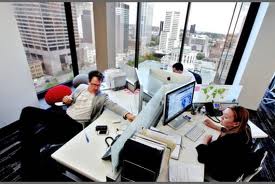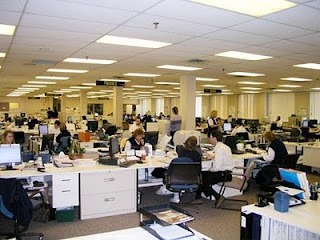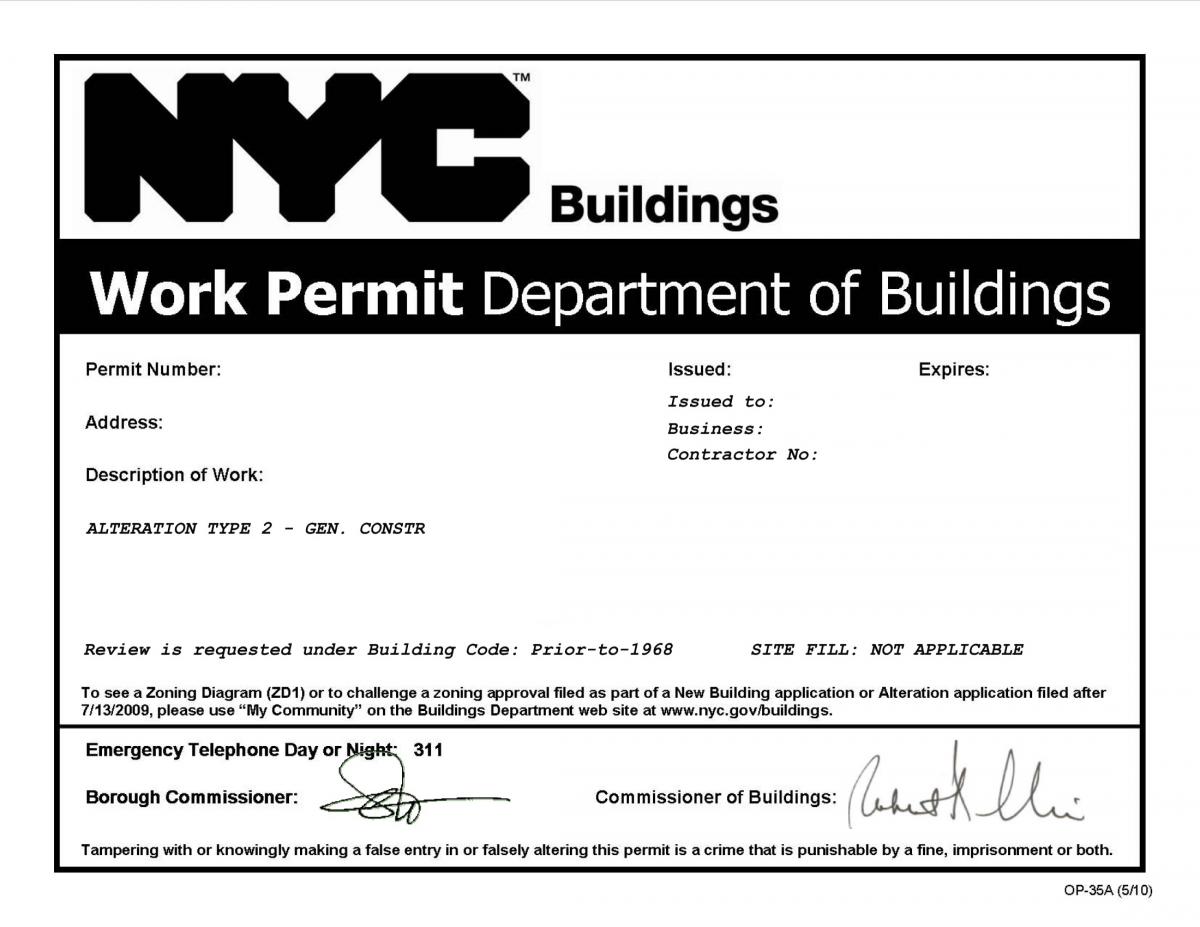Are you being pushed into a completely open office concept (no walls) but not sold on the idea due to noise and confidentiality concerns?
Open offices are generally viewed as a natural extension of the cubicle, largely devoid of enclosed areas with the exception of conference rooms. Open space environments allow for greater collaboration in teams. And with newer space designs focused on teams and projects, the team leaders are more integrated into their team’s workspace.
Open spaces were a natural extension of the newsroom and trading floor arrangements. They were extremely efficient at communicating urgent information between everyone in an organization quickly. While these spaces promoted market efficiency and breaking news, this was not used for heads down thoughtful work.
What does this mean for privacy issues and management of staff? The acoustic issues are a result of both a lack of barriers and proximity to other people. Keep in mind that in most open office situations, you are facing someone less than six feet away. There are no ambient noise reduction strategies that will combat line of sight sound transmission. Many find it very distracting at first, but eventually have learned to cope with the changed environment because they aren’t given a choice. They find they have to be a lot more discreet with paperwork or what was visible on their computer screen.
 Wh
Wh ile open office environments can be great, there is still a need for privacy space (four solid walls, floor to ceiling). It is possible to introduce the ideas of an open office while still maintaining good privacy, but it does take effort and design planning. These spaces can be for conferences, private meetings, group instruction, employee counseling, etc. There are system walls that are easy to install (floor to ceiling) but sound attenuation is often a problem. To help mitigate the change, small “huddle rooms” that are not scheduled (drop in on a first come, first served basis) for private calls or small meetings where confidentiality is needed.
ile open office environments can be great, there is still a need for privacy space (four solid walls, floor to ceiling). It is possible to introduce the ideas of an open office while still maintaining good privacy, but it does take effort and design planning. These spaces can be for conferences, private meetings, group instruction, employee counseling, etc. There are system walls that are easy to install (floor to ceiling) but sound attenuation is often a problem. To help mitigate the change, small “huddle rooms” that are not scheduled (drop in on a first come, first served basis) for private calls or small meetings where confidentiality is needed.
With respect to acoustics, you want to maximize absorption and minimize direct line of sight between people (i.e. minimize people sitting back-to-back; incorporate transparent partitions at eye-level). Many people are not a fan of white noise (aka masking systems).
But no matter what anyone tells you, it is annoying working next to people who talk, laugh, carry on, eat, etc. And, if you are on the phone on a conference call, or doing budgets, it is a challenge. Open office concepts do require re-adjusting people’s behaviors and expectations. People who talk on the phone loudly, or play music will have to change and this is sometimes difficult. You will need to establish some new norms to help everyone cope with the new environment.
It can be quite a challenge at first, but many learn to cope with all the distractions. It makes working in a more open forum where people have access to you at all times and you get answers sooner than later. Discussions break out all day long across the room and put in front of everyone can be interesting.
The important thing is to make sure that you find the environment that is best suited to your business.
Discover more from Helping NYC & Long Island Commercial Tenants, Owners, and Developers
Subscribe to get the latest posts sent to your email.






This is an interesting point of view but does not really address the psycho-social aspects to change management. Getting workers to understand the new environment through training and or mock-ups is a great way to increase understanding and the opportunity for performance increases. Its all about communication.